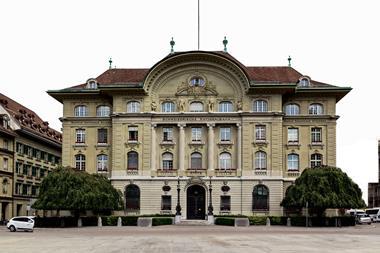Switzerland’s BVG Kommission, responsible for implementing the country’s second-pillar pensions law, has recommended lowering the minimum interest rate Pensionskassen must guarantee on active members’ mandatory contributions (Mindestzins) from 1.25% to 1% next year.
On an annual basis, the commission’s experts are charged with assessing capital markets (bonds, equities and real estate) and advising the government on how to adjust the rate the following year.
To date, the government has always followed its recommendations.
In a statement, the commission said it had debated a number of member proposals for next year, ranging from a drastic cut of the interest rate to 0.5% to leaving it at 1.25%.
Before the session, the Swiss pension fund association ASIP, the employer association SAV UPS and the federation of insurers SVV ASA had called for the rate to be cut to 0.75%.
Swiss union federation SGB USS, however, lamented the “ongoing descent” of the minimum rate, which it said would eventually lead to lower pension levels, although it noted that the 1% recommendation would prevent “worse scenarios”.
The Mindestzins remained stable at 4% until 2000, but it was then slashed to 2.25%.
Since then, it has fallen further for the most part, with a few exceptions, such as in 2014, when it was raised from 1.5% to 1.75%, where it remained for 2015.
Swiss consultancy PPCmetrics, publishing the second edition of its analysis of revised Pensionskassen annual reports (in German), found that the effective interest rate granted on active members’ portfolios had fallen “considerably” year on year.
In 2015, the average effective interest granted by the 262 surveyed Pensionskassen was 1.91%, compared with 2.34% the year previous.
The highest interest rate was 5%, granted by just 1% of all Pensionskassen.
For 2014 and 2013, the highest interest rate granted was about 10% and 9%, respectively – a marked increase on the 5% and 6% maximums between 2009 and 2012.
PPCmetrics also warned that further cuts in the discount rates used to calculate pension liabilities – the so-called Technischer Zins – had lead to a deterioration of risk-adjusted funding ratios.
The consultancy said it expected the conversion rate used to calculate pension payouts from accrued capital, or Umwandlungssatz, to fall further from the current average of 6.1% to around 5.8% in the coming years.
For further analysis of the PPCmetrics survey, see the November issue of IPE magazine









No comments yet